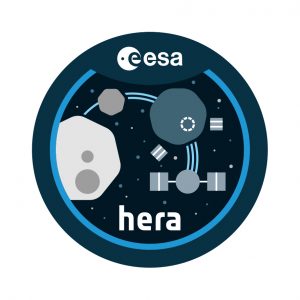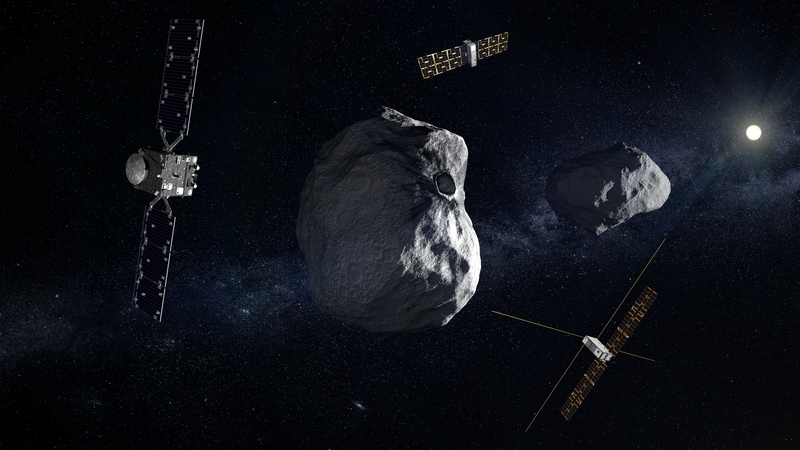The Asteroid Impact & Deflection Assessment (AIDA) Mission
The AIDA (Asteroid Impact & Deflection Assessment) mission, a joint project by ESA and NASA, has successfully demonstrated the kinetic impactor concept to deflect asteroids, marking a milestone in planetary defense. This innovative experiment has allowed scientists to study the physical properties of asteroids following a controlled impact.
AIDA comprises two independent but complementary missions: the DART (Double Asteroid Redirection Test) projectile from NASA and the Hera observation spacecraft from ESA. Both missions were approved and launched by their respective agencies.
In October 2022, the DART mission successfully impacted Dimorphos, the secondary asteroid in the binary system (65803) Didymos, altering its orbit in a controlled manner. This event stands as the first practical demonstration of deflecting a near-Earth object.
The Hera spacecraft was launched on October 7, 2024, and is currently en route to Didymos. It is expected to reach its destination in early 2027, where it will study the effects of the DART impact, characterize the physical properties of both Dimorphos and Didymos, and provide crucial data to guide future planetary defense strategies.
For more details on the Hera mission design and to view part of its launch, you can watch this video: Hera Design and Launch.
The Planetary Sciences section of the Astronomy & Astrophysics research group at the University of Alicante continues to play a key role in both missions. Adriano Campo Bagatin is a prominent member of the Hera Research Team (ESA) and the AIDA Coordination Committee. Paula Benavidez, Antonio Santana, and ACB are part of the DART Science Team (NASA), contributing to the analysis of DART’s successful impact and the monitoring of Dimorphos’s evolution.
With Hera on its way, the data it will collect in 2027 will be essential for a deeper understanding of kinetic impacts on asteroids and for defining the future of planetary defense missions.


